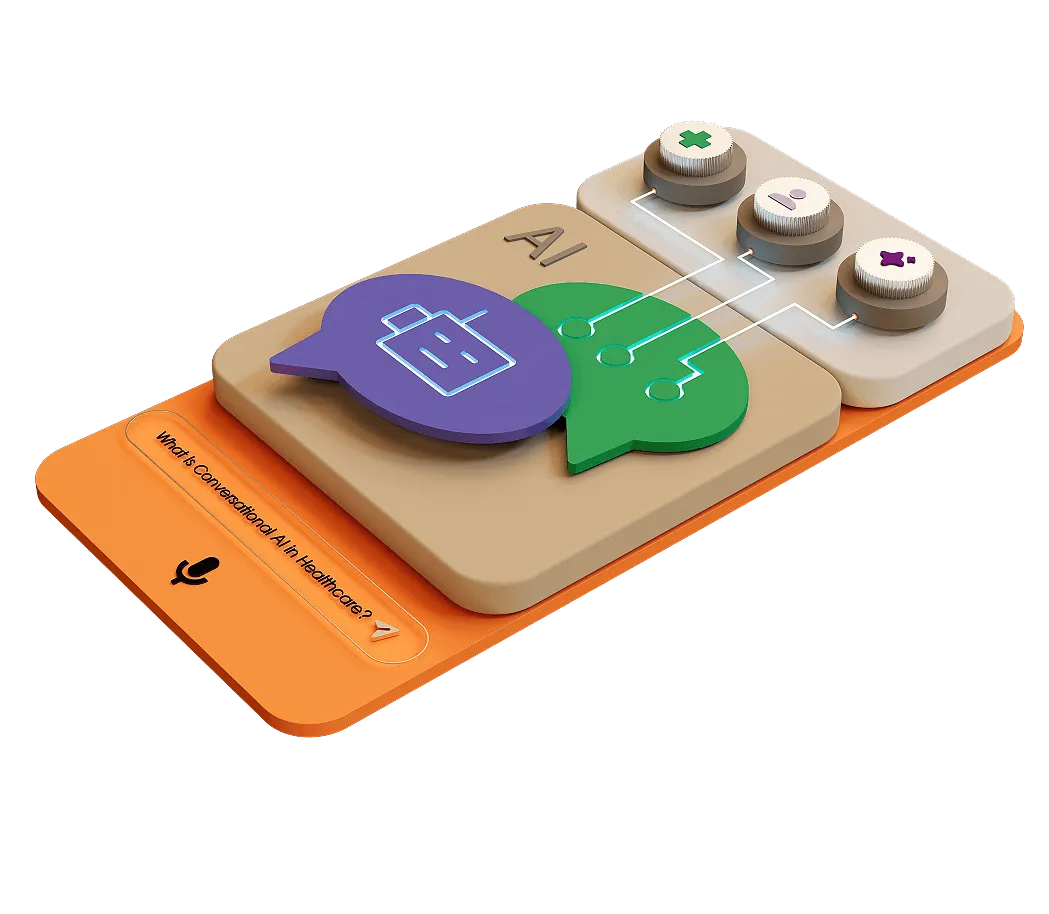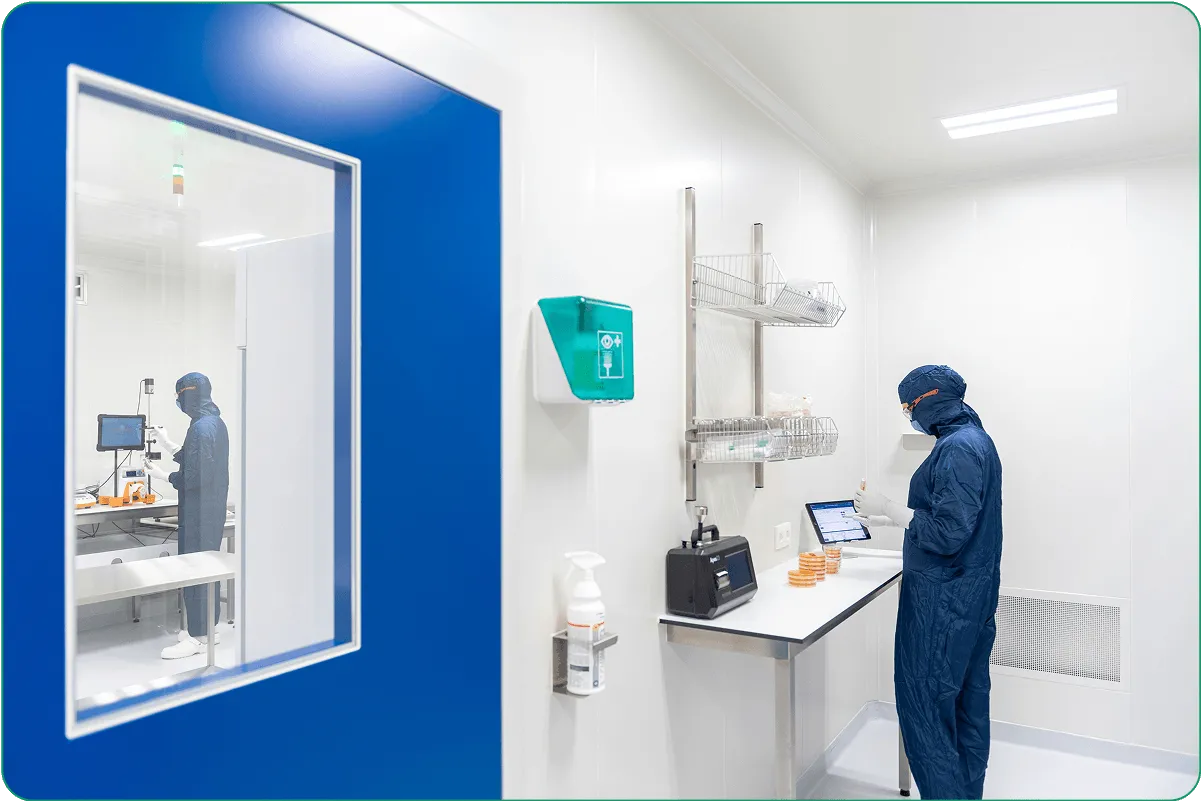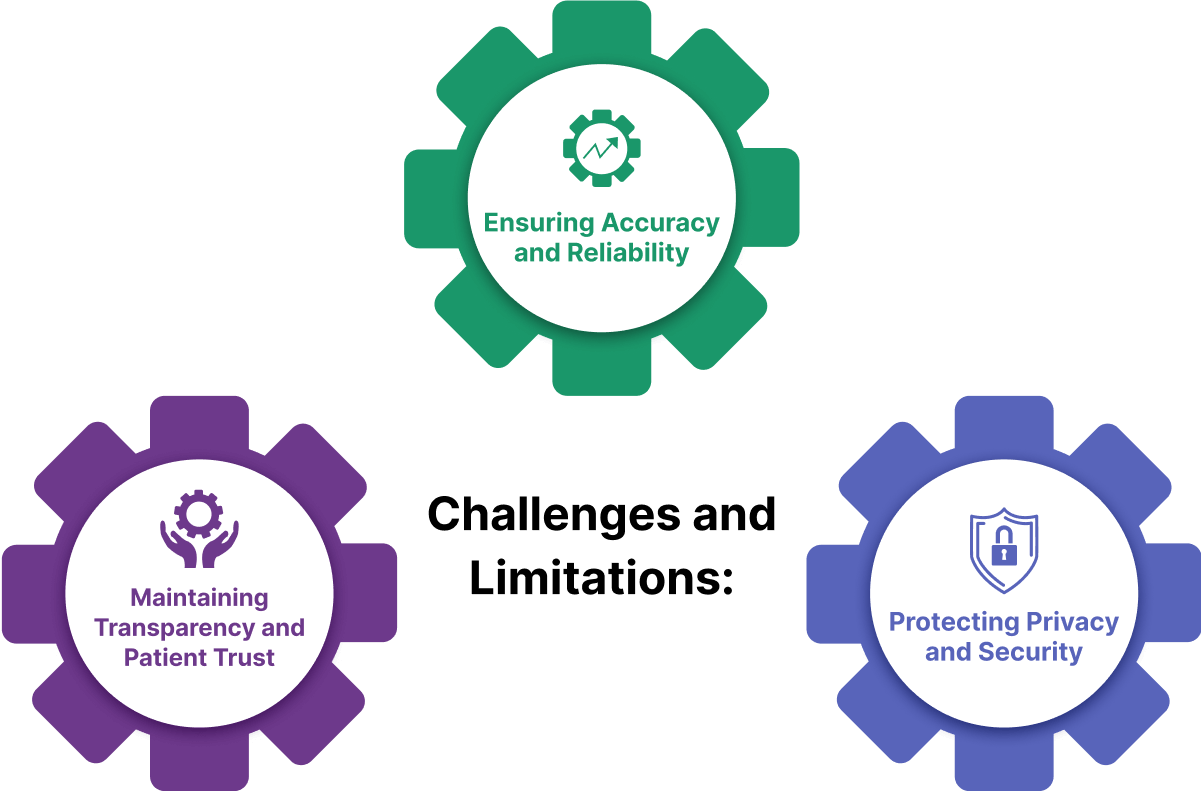For many people, trying to see a specialist is far more complicated than it should be. Conversational AI for healthcare is beginning to improve that experience across the landscape. Identifying the right starting point can be confusing, and the wait times often feel unreasonably long. In a field where timing is critical, a more streamlined and compassionate approach is essential.
Generally, one in four individuals still struggles to receive care when they need it most. The good news is that innovative solutions are helping to change that. These technologies enhance access by guiding individuals through the process more efficiently, reducing delays, and providing tailored support throughout their journey. For professionals, they simplify routine tasks and free up time to focus on what matters most delivering quality care.

In this article, we’ll examine how conversational technologies are enhancing communication, improving efficiency behind the scenes, and making access to care more timely and effective.
When you interact with technology, you want it to feel effortless and intuitive, and that’s precisely what it’s designed to deliver.
Unlike early customer service chatbots that relied on fixed scripts and decision trees, today’s systems are much more advanced. They’re trained on extensive human dialogue and large datasets, enabling them to handle complex conversations, not just simple questions.
It’s important to understand the difference between conversational and agentic AI. Conversational focuses on communicating clearly and naturally with patients and providers, while agentic works behind the scenes to autonomously complete tasks and solve complex problems. Together, they create a seamless experience. For example, as a provider, you don’t need to write any code or learn complicated software. You can simply use natural language prompts to have the system gather and summarize a patient’s medical history quickly and clearly. This capability is powered by several key technologies:

Healthcare conversational AI is quickly becoming a cornerstone of innovation in the industry. People are deploying it in countless ways, from accelerating drug research to supporting clinical decisions and enhancing engagement. In hospitals and clinics, intelligent chatbots are already helping automate routine responsibilities such as recording vital signs or managing medication delivery, freeing up medical staff to focus on higher-value tasks.
Here are several impactful ways it is being used to streamline services and improve outcomes.
Healthcare software consulting plays a vital role in supporting ongoing care by simplifying access to essential services. Individuals can request prescription renewals, check lab results, or get information about medications through intuitive conversations.
By making information readily available, these tools empower people to take a more active role in managing their well-being.
Even routine tasks like creating an account or resetting a password can become barriers to accessing care. Conversational helps by guiding users through these processes with ease, ensuring individuals can log in to their portals and retrieve information without unnecessary hassle.
Timeliness can have a significant impact on outcomes. Conversational tools can deliver personalized reminders about appointments, medications, immunizations, and follow-ups, helping to keep people informed and on track with their care plans.
These proactive messages promote a sense of connection and accountability, showing individuals that their providers are actively invested in their well-being.
The billing can be confusing and stressful. Conversational streamlines financial interactions by helping customers understand invoices, track payments, and manage insurance claims all through a simple, conversational interface.
By integrating with back-end systems, these tools ensure that all billing and claims-related information is accurate and up-to-date.
Although the system is powerful, certain conversations still require a human touch. Conversational systems are designed to recognize when a concern is too sensitive or complex and can instantly transfer the conversation to a live agent.
By analyzing tone, keywords, and emotional cues, the system ensures a smooth transition without forcing the person to repeat themselves.
The advancement significantly reduces repetitive and error-prone administrative tasks. This technology can transcribe, summarize, and update EHRs while assisting with indexing, retrieval, and categorization. With just a few conversational prompts, relevant information appears instantly, eliminating time wasted on navigating menus and forms.
The system recognizes document types and templates, accurately auto-filling data on the screen. Paired with Optical Character Recognition (OCR), it also helps digitize paper records.
Traditional 24/7 support staffed by humans is costly and inefficient. Conversational offers a smarter alternative, automating inquiries through natural language interfaces. These virtual assistants tap into a provider’s content repository to answer common questions, reducing overhead while offering multilingual, user-friendly interactions.
Equipped with NLP and sentiment analysis, they handle high volumes of inquiries promptly, escalating only when necessary. From scheduling appointments to providing office hours, these chatbots learn continuously, easing administrative workloads, minimizing wait times, and enhancing overall satisfaction.
Doctors and clinicians can rely on conversational tools to assist in diagnosing and personalizing treatment plans. Trained on vast, verified medical datasets, these systems aggregate information from EHRs, lab results, and other sources to offer real-time insights. The provider delivers actionable recommendations during consultations, improving accuracy even in complex cases involving pre-existing conditions.
It can flag potential drug interactions and detect emerging clinical patterns by analyzing patient well-being indicators. Essentially, conversation serves as a powerful aid during diagnosis and treatment planning.
Conversational is also making strides in mental health support by analyzing tone, context, and content to provide empathetic, real-time assistance to those facing psychological distress. These HIPAA-compliant, cost-effective tools offer access to therapy for individuals. This system can assist therapists in remote areas by helping them prioritize urgent cases. When necessary, the system escalates the conversation to human professionals.
Meanwhile, it conducts cognitive behavioral assessments and offers personalized interventions based on evidence-based This approach to psychology eases therapists’ workloads and improves accessibility to mental health care.
The Conversational system can take over the tedious tasks of booking, rescheduling, and confirming appointments, thereby freeing staff from manual efforts. The system syncs with client preferences, matches them with the appropriate specialist, checks availability, and sends reminders via SMS, email, or other platforms.
Powered by machine learning, bots avoid scheduling conflicts, predict no-shows, and proactively suggest optimal appointment times based on historical data. This automation streamlines the entire scheduling process, enhancing care and reducing administrative burden.
Following discharge, patients no longer need constant manual follow-up from staff. Combined with IoT, 5G, and machine learning, clients can self-report vital signs and symptoms in their preferred language via simple prompts. Staff can monitor data remotely and receive real-time alerts in emergencies.
People also have the option to chat with professionals directly within the platform. The system works with EHRs and uses predictive analytics to identify possible health issues, allowing caregivers to pay more attention to urgent cases while keeping an eye on others.
Conversational agents serve as around-the-clock medical knowledge hubs and virtual tutors. Trained on authoritative sources like research papers, case studies, and clinical guidelines, they provide professionals with up-to-date information on treatments, procedures, and breakthroughs.
Users can ask natural language questions and receive instant, evidence-based answers tailored to their expertise. Generative capabilities of healthcare AI allow these tools to summarize lengthy documents, highlight key points, and reformat information, helping clinicians save time and support lifelong learning through quizzes and interactive exams.

When it comes to patient care, every detail matters, and so does the way information flows between providers and patients. Conversational AI for the healthcare industry brings these pieces together seamlessly, making it easier to gather, share, and act on important information.
Besides, the global market was valued at approximately USD 11.58 billion in 2024 and is expected to grow to USD 41.39 billion by 2030, with a compound annual growth rate of 23.7% between 2025 and 2030. Increased demand, more affordable chatbot development, the rise of support services, and the widespread adoption of omnichannel solutions drive this rapid expansion.
Here are four meaningful ways this technology is enhancing patient services and supporting better outcomes.
When you need a clear picture of a patient’s medical history, AI for patient engagement can help in seconds. By pulling information from your CRM and patient files, it delivers a concise summary that includes treatment plans, prescribed medications, past visits, and referral information, all in one place.
For a quick look at a patient’s medication regimen, you can generate a complete summary using information from your system. It outlines dosage instructions, frequency, and any potential interactions, helping you make safer, faster decisions.
From appointment confirmations to follow-up care tips, tools can generate customized emails by accessing CRM and referral data. These timely, relevant messages keep patients informed and strengthen engagement.
Instead of manually filling out standard forms, you can transform assessment templates into digital, actionable documents. By analyzing existing CRM files, it simplifies documentation while ensuring you have the insights you need to deliver quality care.
You can manage scheduling by interacting with patients in real time to find available time slots, confirm appointments, or suggest rescheduling options, reducing administrative burden while improving the patient experience.
The assistants can respond to frequently asked questions about symptoms, treatment options, or post-visit instructions 24/7. This helps patients get reliable information quickly while allowing care teams to focus on more complex cases.

As AI healthcare conversational assistants become more widely adopted in healthcare, they open the door to new efficiencies, smarter communication, and improved customer engagement. However, like any transformative technology, it also brings important challenges that providers must address thoughtfully and proactively.
Successful implementation is about leveraging innovation and doing so responsibly, with a clear understanding of potential risks. From privacy concerns to questions of accuracy and transparency, organizations need to consider how artificial intelligence in healthcare business is integrated into care workflows to ensure client safety, trust, and compliance.
Below are some of the key limitations to keep in mind, along with how to approach them with care.
When using systems that rely on clients' files, privacy must be a top priority. These tools often access sensitive records and personal information, making it essential to adhere to HIPAA regulations and other protection standards.
To safeguard this data, organizations should implement multiple layers of app security, enforce strict access controls, and follow best practices in IT. A secure solution not only ensures compliance but also builds customers confidence and trust in your systems.
While it has made outstanding strides, it’s still evolving, and its outputs aren’t always perfect. Systems heavily rely on the quality and completeness of the records they receive for training. If the data is biased, outdated, or unrepresentative of your client population, it may deliver flawed or misleading results.
Even with high-quality information, it can sometimes generate incorrect or fabricated responses. For that reason, providers should ensure that any tools they use are trained on relevant, validated datasets and that there’s always a human in the loop to verify critical information.
As healthcare integration solutions become more intertwined with the individual experience, it’s vital to be upfront about their role. People should know when they're talking to a system instead of a person and how it's used in their care.
This transparency is key to maintaining ethical standards and preserving trust. Providers should also ensure that people give informed consent when involved in clinical decision-making and that autonomy remains central to every interaction.

Undoubtedly, innovation is reshaping how providers operate, making it easier to manage administrative tasks, communicate with customers, and gain valuable real-time insights. With the help of technologies like neural networks, care can become more personalized, efficient, and accessible.
When implemented thoughtfully and supported by human oversight, it can enhance care in a meaningful way. The key is to partner with trusted healthcare conversational AI companies who understand the unique needs of your organization and can tailor a solution to fit.
Virtual events and online conferences have become essential tools for keeping professionals up-to-date with the latest innovations without the cost and time commitment of travel. These custom cloud-based healthcare solutions support ongoing learning and improve how providers connect and collaborate. Additionally, they can enhance relationship management, offering more organized and responsive care experiences.
This innovation is driving advancements across the space, impacting areas from pharmaceutical workflows to client engagement. AI-powered telehealth software can quickly respond to routine inquiries, while intelligent self-service portals curate content based on a provider’s specialty and interests, making it easier to access relevant information when it’s needed most.
Professionals value meaningful, informed conversations, not generic sales messages. Platforms like Salesforce Life Sciences Cloud integrate clinical insights with engagement insights, allowing your team to tailor strategies that speak directly to the needs and challenges of specific audiences.
A centralized platform that uses data analytics can significantly boost your ability to understand and anticipate provider needs. With the right tools, you can track everything from provider specialties and customer referrals to content performance and engagement trends. This knowledge enables you to generate predictive models, uncover actionable insights, and make smarter, faster decisions.

Healthcare and conversational AI are quickly evolving, paving the way for smarter, more connected, and patient-centered experiences.
Moreover, embedding chatbots into messaging platforms enables businesses to engage with customers on the channels they use most, delivering instant, tailored support right within their favorite apps. Research from IBM highlights that this approach can reduce customer service costs by as much as 30%, demonstrating the clear financial benefits of implementing it in messaging environments.
Here’s a look at the most promising innovations set to shape the future of the industry.
AI-powered chatbot development services and voice assistants are transforming how people seek initial care. By describing their symptoms in natural language, individuals can receive instant, around-the-clock guidance, whether that means self-care advice, an urgent care referral, or scheduling an appointment. These tools ease the load on medical staff while delivering standardized support aligned with clinical best practices.
After a procedure or hospital stay, individuals often have questions or concerns. Conversational offers consistent and easy-to-access post-care support, such as reminders for medication, wound care instructions, or physical activity guidelines. This kind of ongoing guidance helps reduce complications, alleviates patient anxiety, and decreases unnecessary follow-up calls.
Tomorrow’s hospital rooms are becoming more intelligent and responsive. Conversational interfaces allow people to control their environment by adjusting lights, temperature, and entertainment using voice commands. These systems can also provide timely updates, such as medication schedules or treatment plans, creating a more comfortable and informed recovery experience.
Generative is opening up new possibilities for individualized treatment planning by analyzing massive amounts of records. When paired with conversational AI, it enables real-time, tailored recommendations based on each unique profile, improving outcomes and resource efficiency across the system.
In summary, conversational AI technology in healthcare is set to play a pivotal role in transforming healthcare by making services more responsive, accessible, and user-friendly. As explored, its integration brings significant benefits, streamlining communication, improving service quality, and boosting engagement across the board. Despite certain challenges, the outlook remains highly promising. With continuous advancements, this technology is well-positioned to enhance care delivery and contribute to improved outcomes on a global scale.
At CleverDev Software, we create tailored solutions that reflect your goals and support your operations. Let’s start a conversation about how we can transform your everyday workflows into a catalyst for greater efficiency and business growth.


Our newsletter is packed with valuable insights, exclusive offers, and helpful resources that can help you grow your business and achieve your goals.